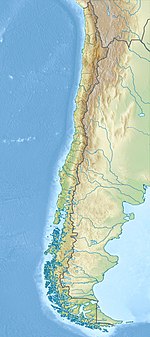1730 Valparaiso earthquake
| Date | July 8, 1730 |
|---|---|
| Magnitude | 8.7 Ms |
| Epicenter | 32°30′S 71°30′W / 32.5°S 71.5°WCoordinates: 32°30′S 71°30′W / 32.5°S 71.5°W |
| Areas affected | Chile |
| Tsunami | Yes |
| Casualties | Unknown |
The 1730 Valparaíso earthquake occurred at 03:45 local time (08:45 UTC) on July 8. It had an estimated magnitude of 8.7 and triggered a major tsunami with an estimated magnitude of Mt=8.75, that inundated the lower parts of Valparaíso. The earthquake caused severe damage from La Serena to Chillan, while the tsunami affected more than 1,000 km (620 mi) of Chile's coastline.
The earthquake took place along the boundary between the Nazca and South American tectonic plates, at a location where they converge at a rate of seventy millimeters a year.
Chile has been at a convergent plate boundary that generates megathrust earthquakes since the Paleozoic (500 million years ago). In historical times the Chilean coast has suffered many megathrust earthquakes along this plate boundary, including the strongest earthquake ever measured. Most recently, the boundary ruptured in 2010 in central Chile.
The earthquake caused severe damage over a wide area, Valparaíso, Coquimbo, Illapel, Petorca and Tiltil were all affected. The parish church in La Serena was destroyed.
Only a few deaths were recorded due to the earthquake, reportedly because a strong foreshock had caused people to leave their homes. The same is also true for the following tsunami with the inhabitants running to higher ground after seeing the water recede, so that only a few were killed.
...
Wikipedia


